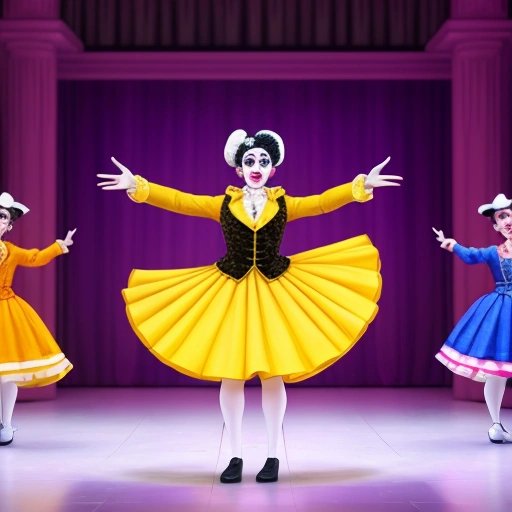The captivating tale of Figaro, the operatic legend, losing his voice and transforming into a mime has left audiences in awe. Known for his breathtaking solos that could move even the coldest of hearts, Figaro's voice was the very essence of his artistry. But fate had different plans for this beloved character, as he must now communicate solely through the language of mime.
The news of Figaro's shocking voice loss spread like wildfire through the opera community. The halls were filled with gasps of disbelief, tears of sorrow, and an eerie silence that was once filled with his enchanting melodies. Opera houses around the world were left in despair, wondering how they would fill the void left by the absence of Figaro's resounding voice.
But as the saying goes, the show must go on, and Figaro was determined to continue gracing the stage with his presence, even if it meant adapting to an entirely new form of expression. With his voice gone, he turned to the art of mime, a silent and expressive world where movements and gestures took center stage.
At first, the transition was challenging for Figaro. He struggled to convey the depth of his emotions without the power of his voice. But soon, he discovered that the world of mime offered a whole new realm of possibilities. With each graceful movement, he could tell a story, elicit laughter, or provoke tears, captivating audiences in ways he never thought possible.
Figaro's mime performances became the talk of the town, drawing in crowds from far and wide. His ability to communicate without words was seen as a testament to his versatility as an artist. Gone were the days of relying solely on his melodic voice; now, he had the power to captivate with just a flick of the wrist or a subtle facial expression.
The opera world had never seen anything like it. Figaro's transformation from celebrated opera singer to masterful mime was a spectacle in itself. Critics praised his ability to convey emotions so vividly, even without the use of words. His performances had a new depth and complexity, leaving audiences in awe of his talent.
But Figaro's journey as a mime was not without its challenges. He faced criticism from some who believed that he should have retired gracefully after losing his voice. They accused him of attempting to cling onto the spotlight, tarnishing his legacy as an opera singer. But Figaro remained undeterred, continuing to push the boundaries of his art form and prove that his talent knew no bounds.
In a world where words often fail to capture the full range of human emotion, Figaro's transformation into a mime reminds us of the power of non-verbal communication. His performances serve as a reminder that sometimes, the most profound messages can be conveyed through a simple gesture or expression.
As Figaro continues to mesmerize audiences with his breathtaking mime performances, he has become an inspiration to artists everywhere. His story is a testament to the resilience of the human spirit and the boundless possibilities that arise when faced with adversity.
So, dear readers, let us applaud Figaro, the opera character turned mime, for his unwavering determination, his ability to reinvent himself, and his refusal to let the loss of his voice define him. In a world that often limits us to the roles we are assigned, Figaro reminds us that true artistry knows no boundaries.



